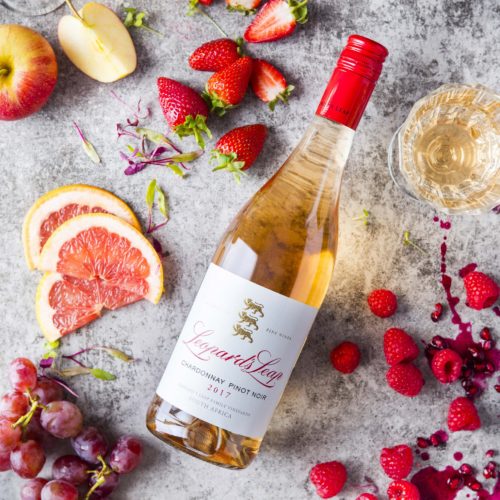
THE ‘NOSE’ DECONSTRUCTED
- 08 March 2018
- 0 Comment(s)
THE ‘NOSE’ DECONSTRUCTED
Anyone who has ever been to a wine tasting, knows that there is a lot of ‘nose’ action. Swirling the wine in the glass to open the ‘nose’ and smelling the wine to identify the ‘nose’. This can be quite intimidating for wine novices and those who drink wine purely for the enjoyment it brings.
While identifying the berry flavours – and if you are really good, the specific berry – raspberry, not cherry… – really is not necessary, it can actually be quite a bit of fun! These nuances are what differentiate wine from other drinks – vintage influences, winemaking methods, maturation, serving temperature, food pairing and even stemware all have an influence on what you experience in your glass of wine. With a little bit of guidance, some information and of course practice, one might actually enjoy building a memory bank of flavour associations!
As an example, the Leopard’s Leap Winemaking team has deconstructed the popular Leopard’s Leap Chardonnay Pinot Noir from our Classic Range. The flavours identified are Pink Lady apple (quite different from Golden Delicious or Granny Smith or Top Red…), raspberry, red grape, grapefruit and strawberry. Wonderful! Sounds like a beautiful fresh and fruity bouquet, but where do all these flavours come from?
Everything about wine starts in the vineyard, so of course the Chardonnay and Pinot Noir grapes used in this blend bring certain notes to the wine. A lot about the wine comes from its varietal characteristics combined with the terroir (grapes grown in a warmer climate usually offer more fruit while those in a cooler area a fresher acidity) and the specific season (in the dry climate of 2018, for example, we expect more concentrated flavours).
But when it comes to those specific fruit flavours on the nose, what happens during fermentation is of the essence. The process of fermentation through which the natural sugar of the grape is turned into alcohol, to a large extend determines the bouquet. The type of yeast used in the fermentation process is cardinal. Certain types of yeasts result in certain fruit flavours. For the Leopard’s Leap Chardonnay Pinot Noir, two types of yeasts were selected: A Champagne-yeast that ensures fresh citrus aromas and a yeast used specifically for Rosé-type blends that highlights fruity notes.
Fruit within the same family will also contribute similar characteristics. Strawberries, grapes and raspberries usually ensure sweeter aromas while apple and grapefruit add structure, ample acidity and a refreshing character.
When you pour your next glass of Leopard’s Leap Chardonnay Pinot Noir, swirl it slightly and see what you find on the ‘nose’ before you take that first satisfying sip!
Interested to learn more? Do visit us in the Franschhoek Valley for a Wine Tasting or our popular Friday Food and Wine Pairing!
Anyone who has ever been to a wine tasting, knows that there is a lot of ‘nose’ action. Swirling the wine in the glass to open the ‘nose’ and smelling the wine to identify the ‘nose’. This can be quite intimidating for wine novices and those who drink wine purely for the enjoyment it brings.
While identifying the berry flavours – and if you are really good, the specific berry – raspberry, not cherry… – really is not necessary, it can actually be quite a bit of fun! These nuances are what differentiate wine from other drinks – vintage influences, winemaking methods, maturation, serving temperature, food pairing and even stemware all have an influence on what you experience in your glass of wine. With a little bit of guidance, some information and of course practice, one might actually enjoy building a memory bank of flavour associations!
As an example, the Leopard’s Leap Winemaking team has deconstructed the popular Leopard’s Leap Chardonnay Pinot Noir from our Classic Range. The flavours identified are Pink Lady apple (quite different from Golden Delicious or Granny Smith or Top Red…), raspberry, red grape, grapefruit and strawberry. Wonderful! Sounds like a beautiful fresh and fruity bouquet, but where do all these flavours come from?
Everything about wine starts in the vineyard, so of course the Chardonnay and Pinot Noir grapes used in this blend bring certain notes to the wine. A lot about the wine comes from its varietal characteristics combined with the terroir (grapes grown in a warmer climate usually offer more fruit while those in a cooler area a fresher acidity) and the specific season (in the dry climate of 2018, for example, we expect more concentrated flavours).
But when it comes to those specific fruit flavours on the nose, what happens during fermentation is of the essence. The process of fermentation through which the natural sugar of the grape is turned into alcohol, to a large extend determines the bouquet. The type of yeast used in the fermentation process is cardinal. Certain types of yeasts result in certain fruit flavours. For the Leopard’s Leap Chardonnay Pinot Noir, two types of yeasts were selected: A Champagne-yeast that ensures fresh citrus aromas and a yeast used specifically for Rosé-type blends that highlights fruity notes.
Fruit within the same family will also contribute similar characteristics. Strawberries, grapes and raspberries usually ensure sweeter aromas while apple and grapefruit add structure, ample acidity and a refreshing character.
When you pour your next glass of Leopard’s Leap Chardonnay Pinot Noir, swirl it slightly and see what you find on the ‘nose’ before you take that first satisfying sip!
Interested to learn more? Do visit us in the Franschhoek Valley for a Wine Tasting or our popular Friday Food and Wine Pairing!







